Arik Levy's colourful chairs for TON have legs that split in two
Milan 2015: Paris-based designer Arik Levy will present a seating range supported by split wooden legs in Milan next month (+ slideshow).
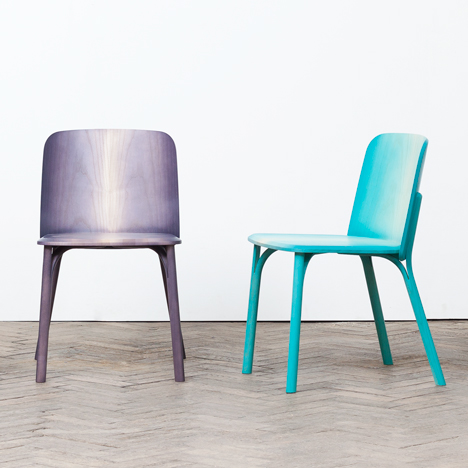
Levy has used Czech furniture brand TON's wood-bending technology to create a chair, a barstool, an armchair and a lounge chair.
Each of the items in his Split collection feature sections of wood that are divided in two and then bent in different directions – a new development for TON.
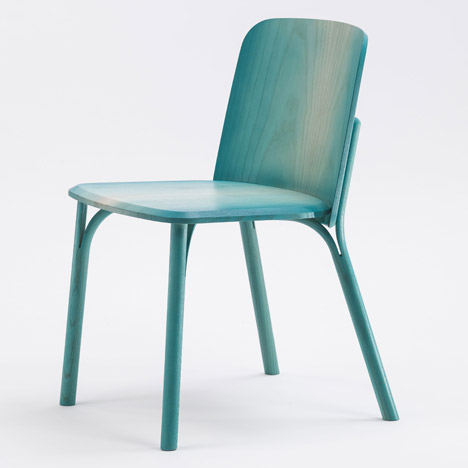
"All the products from this family were born from just one idea, the idea of bending – not in the way it is usually used, but to give it a new shape," said Levy. "In this case, the wood is divided into two parts and each part is bent in a different direction."
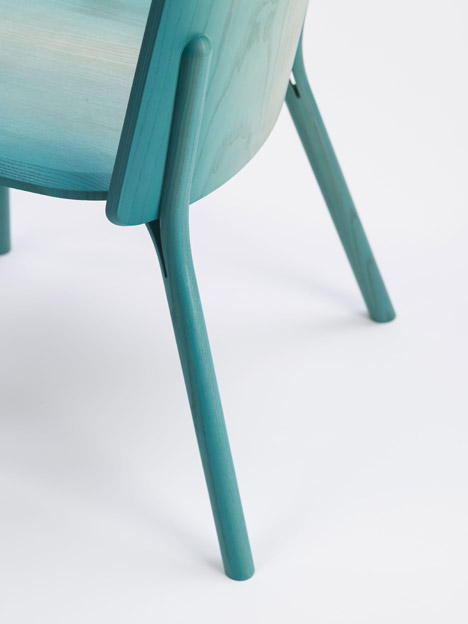
Levy's chairs are split at the top of each leg. At the back, the outer half extends up to support the backrest while the inner portion curves under the seat.
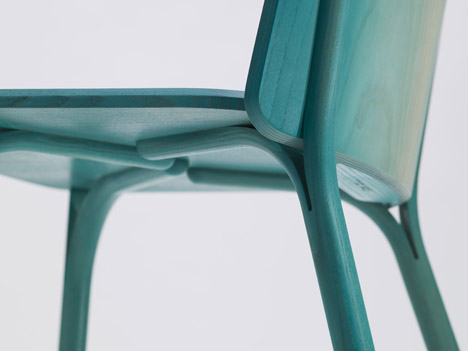
The front legs also help to carry the seat in the same way, though their forward-facing verticals stop under the horizontal surface.
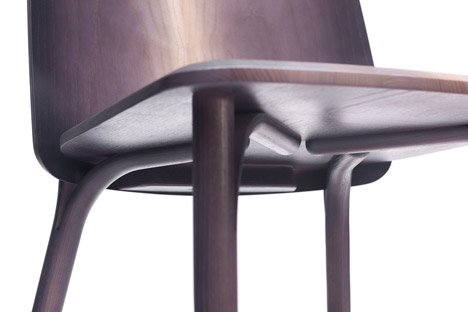
Levy also added coloured gradients to the standard versions of his chairs, which become lighter towards the centre and are applied by spraying a stain onto the furniture pieces.
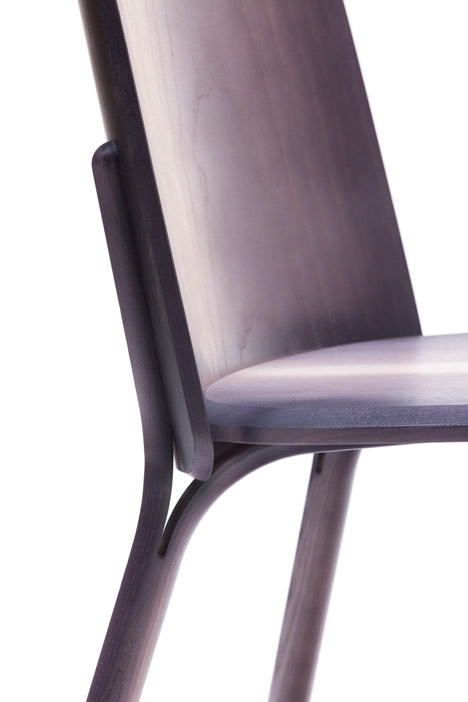
He chose a palette influenced by gradients found in nature, such as sunrise, sunset, leaves and the sea.
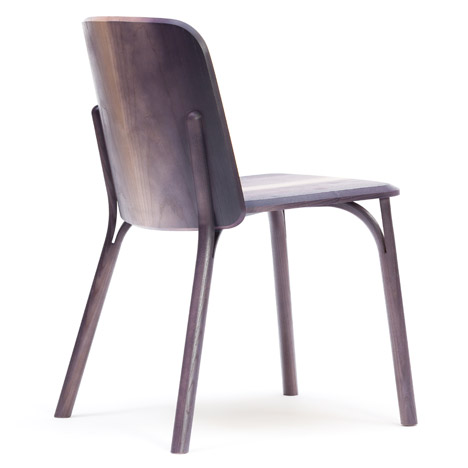
"I wondered about what I could give to a chair apart from its shape," said the designer. "Therefore I chose to highlight the gradient colour."
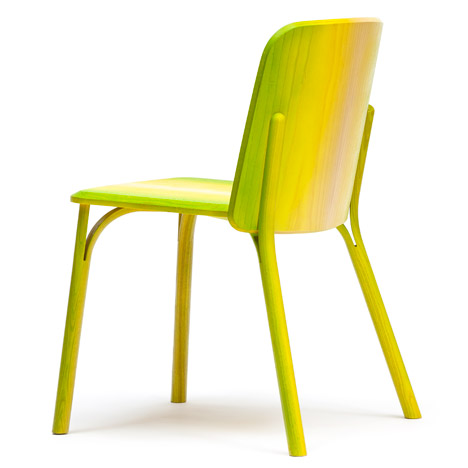
To bend the sections of beech or ash, squared lengths are steamed in special vats for several hours.
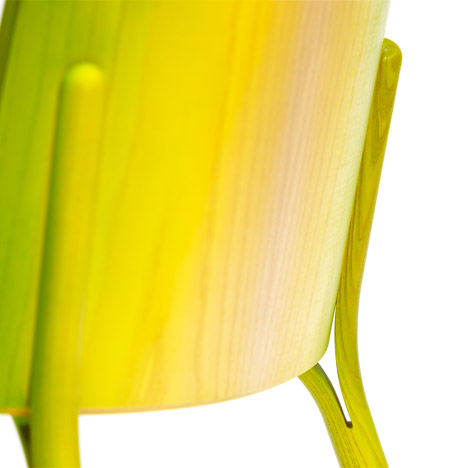
The softened wood is then placed into metal forms and a flange is attached, placing pressure on the wood so it takes the shape of the mould while it cools.
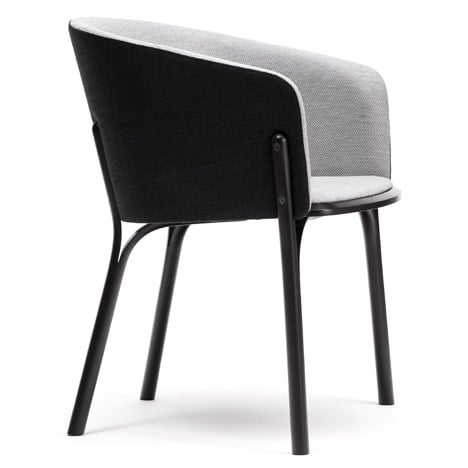
Bent sections are dried and air-conditioned for several weeks, then finished with oil, stain or lacquer.
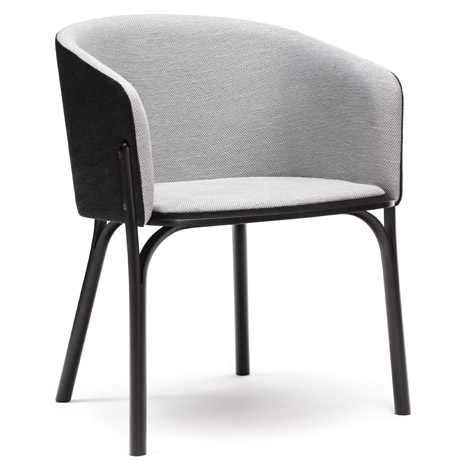
This technique was developed in 1856 by Michael Thonet, who used it to create the No 14 chair – still a staple in cafes worldwide.
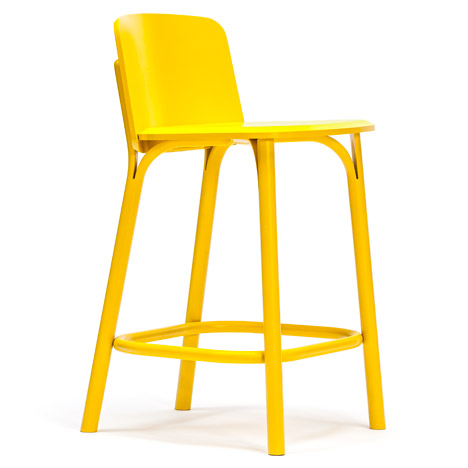
Three of Thonet's factories in the Czech Republic still produce furniture using similar methods today.
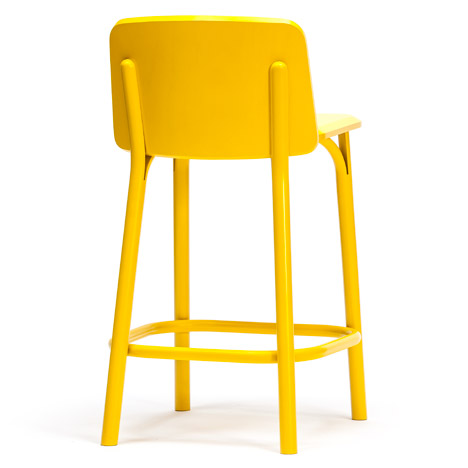
The facility at Bystřice pod Hostýnem became a national enterprise after the second world war and changed its name in 1994 to TON – an abbreviation of Továrna na Ohýbaný Nábytek (Factory of Bent Furniture).
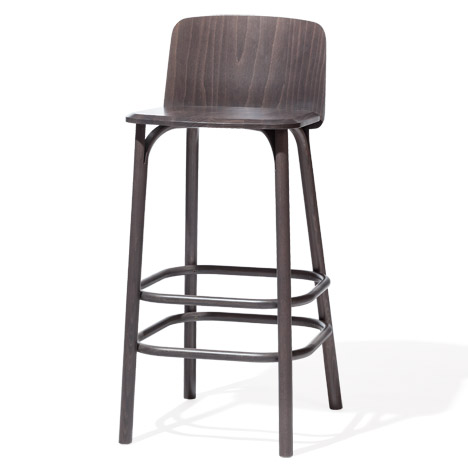
The Split collection will be presented at this year's Salone del Mobile furniture fair in Milan, Hall 12 Stand C05, from 14 to 19 April.
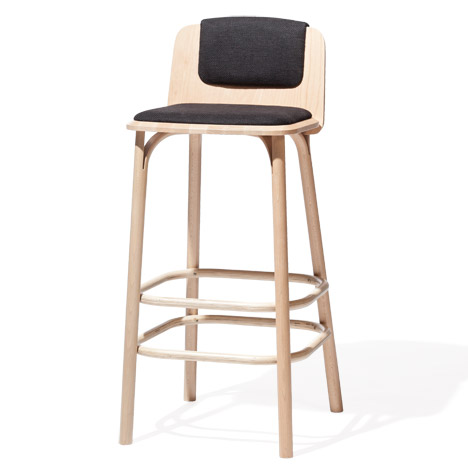
Japanese studio Nendo also designed a collection of furniture with components that look like they're peeled away from wooden stems.